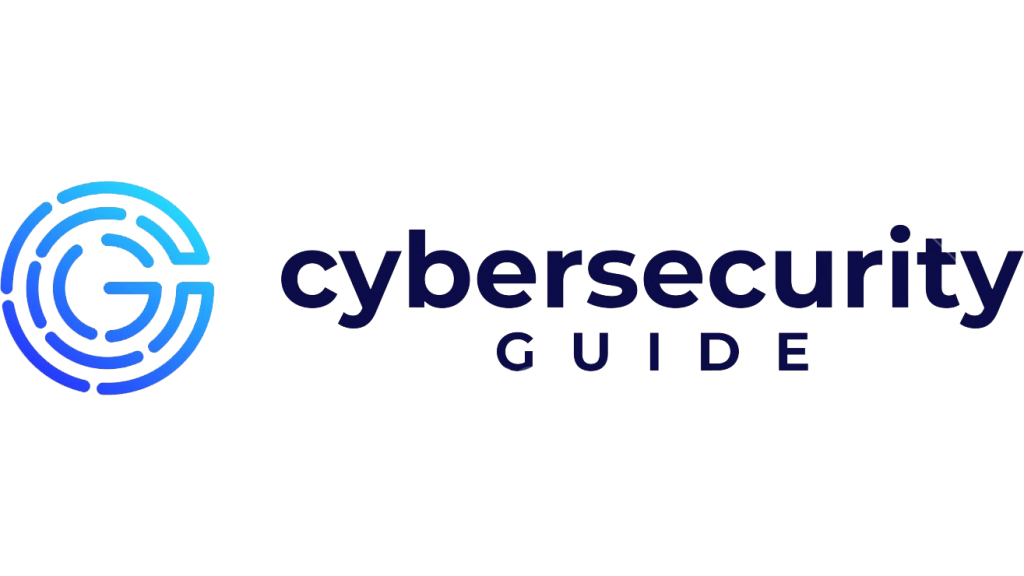A Comprehensive Guide to Mitigating CVE-2025-22457 Vulnerabilities in Ivanti Systems

Hoplon InfoSec
05 Apr, 2025
The U.S. Cybersecurity and Infrastructure Security Agency (CISA) has recently escalated its response to a critical vulnerability, CVE-2025-22457, by adding it to its Known Exploited Vulnerabilities (KEV) Catalog. This vulnerability, which affects Ivanti Connect Secure, Policy Secure, and ZTA Gateways, poses a significant threat to organizations that rely on these VPN and access solutions. As cybersecurity threats continue to evolve, this blog aims to provide an in-depth analysis of the vulnerability, its technical details, and the necessary mitigation strategies to protect sensitive systems. In this article, we delve into the specifics of CVE-2025-22457, discuss its exploitation timeline, profile the threat actors involved, and outline a comprehensive action plan for affected organizations.
What is CVE-2025-22457?
CVE-2025-22457 is identified as a stack-based buffer overflow vulnerability. This type of flaw is categorized under CWE-121, which specifically involves issues related to improper handling of memory buffers. The inherent risk of a buffer overflow is that it allows remote attackers to write or execute arbitrary code on a target system without requiring authentication. With a CVSS (Common Vulnerability Scoring System) score of 9.0, the vulnerability is deemed critical, signifying the severe level of risk it poses to networks and sensitive data infrastructures.
The vulnerability enables unauthorized remote code execution (RCE), meaning that an attacker can run malicious code on a system from a remote location without needing to be physically present or having any prior access. This capability is particularly dangerous for organizations that rely on secure remote connectivity solutions, as it opens the door to complete system compromise, data breaches, and other malicious activities.
Affected Systems and Versions
The vulnerability impacts multiple Ivanti products, specifically:
- Ivanti Connect Secure: All versions up to and including 22.7R2.5 are vulnerable. Recognizing the threat, Ivanti released a patch in version 22.7R2.6 on February 11, 2025.
- Pulse Connect Secure: Versions 9.1R18.9 and prior are impacted. It is important to note that support for these versions ended on December 31, 2024, which further complicates remediation for organizations still using these outdated versions.
- Ivanti Policy Secure: All versions up to and including 22.7R1.3 have been found vulnerable.
- ZTA Gateways: The vulnerability affects versions 22.8R2 and prior.
These vulnerabilities underscore the importance of timely patch management and system updates, especially when dealing with critical infrastructure products used to secure remote access and VPN connections.
Technical Aspects of the Vulnerability
At its core, CVE-2025-22457 is a stack-based buffer overflow that results from the improper handling of input data within the affected systems. In technical terms, a stack-based buffer overflow occurs when an application writes more data to a fixed-length block of memory (the buffer) than it can hold. This excess data can overwrite adjacent memory, potentially altering the execution flow of the program. In the context of CVE-2025-22457, the overflow enables attackers to inject and execute arbitrary code.
This vulnerability is particularly insidious due to its ease of exploitation. With no requirement for prior authentication, an attacker can exploit this flaw remotely. This lack of authentication creates a low barrier to entry for malicious actors, making it imperative for organizations to address the vulnerability immediately. The existence of this vulnerability in widely deployed remote access solutions means that its exploitation could have widespread ramifications across multiple sectors, especially in industries that rely on remote connectivity for critical operations.
Active Exploitation and Threat Actor Profile

Exploitation Timeline and Observations
Reports indicate that exploitation of CVE-2025-22457 began in mid-March 2025. Shortly after Ivanti released a patch for Connect Secure, threat actors were quick to reverse-engineer the update, using it as a blueprint to identify and exploit the underlying vulnerability. The active exploitation phase led CISA to add the vulnerability to its KEV Catalog on April 4, 2025, which is a clear signal to the cybersecurity community about the immediate risk posed by this flaw.
The rapid timeline from patch release to active exploitation is a stark reminder of how swiftly threat actors can adapt and turn defensive measures into opportunities for attack. Organizations are advised to consider this speed as a critical factor in their vulnerability management processes. Immediate remediation, vigilant monitoring, and proactive threat hunting are essential to minimize the risk of successful exploitation.
Threat Actor UNC5221 and Their Tactics
One of the most concerning aspects of the current threat landscape is the involvement of a notorious threat actor group known as UNC5221. This group is known for targeting edge devices and employing advanced malware techniques. Notably, UNC5221 has deployed malware variants such as Trailblaze and Brushfire. These tools are designed for persistent access and data theft, allowing the attackers to maintain a foothold within compromised networks over extended periods.
The tactics employed by UNC5221 highlight the potential espionage and data exfiltration risks associated with the exploitation of CVE-2025-22457. Analysts believe that the group’s actions are part of a broader strategy that may include state-sponsored or nation-linked espionage activities, particularly with ties to China. The reverse-engineering of the February patch and subsequent exploitation underscore the sophisticated nature of their operations.
The involvement of UNC5221 serves as a warning to organizations, especially those operating critical infrastructure or handling sensitive information. It emphasizes the need for heightened security measures and a comprehensive approach to vulnerability management that goes beyond simple patching.
Mitigation Strategies and Recommended Actions
Immediate Actions for Compromised Systems
Organizations that suspect they may have been compromised by the exploitation of CVE-2025-22457 should take immediate steps to secure their networks and systems. The following actions are recommended for swift containment and remediation:
- Threat Hunting and Initial Assessment:
Begin with a comprehensive threat hunting exercise. Utilize tools like Ivanti’s Integrity Checker Tool (ICT) to scan for signs of compromise, such as unexpected web server crashes or abnormal system behavior. This initial assessment can help determine whether the system has already been breached. - Isolation and Forensic Analysis:
If any compromise is detected, promptly isolate the affected devices from the network to prevent further lateral movement. It is crucial to take forensic images of the compromised systems and coordinate with Ivanti or cybersecurity professionals for a detailed investigation. These forensic efforts will help in understanding the extent of the breach and in gathering evidence for potential legal or regulatory actions. - Reset and Re-image Affected Systems:
For cloud and virtual environments that have not yet been compromised, consider performing a factory reset with a clean image. This ensures that any latent threats are eradicated, and the system starts fresh without any hidden vulnerabilities. - Credential and Certificate Revocation:
In cases of confirmed compromise, it is vital to revoke and reissue all security credentials, including certificates, keys, passwords (both administrative and API), and domain account credentials. This should be done thoroughly, including resetting passwords twice and revoking Kerberos tickets, to ensure that any backdoor access created by the attackers is completely eliminated. - Patch Deployment:
Apply the latest patches as advised by Ivanti. For Ivanti Connect Secure, upgrade to version 22.7R2.6 immediately, while patches for Policy Secure and ZTA Gateways are expected by April 21 and April 19, respectively. Keeping these systems updated is a key element in closing the exploitation window for this vulnerability.
Long Term Mitigation and Best Practices
Beyond the immediate containment measures, organizations should consider adopting a series of long-term best practices to strengthen their cybersecurity posture against similar threats:
- Enhanced Vulnerability Management:
Integrate regular vulnerability scanning and patch management into your cybersecurity strategy. Use resources like the CISA KEV Catalog alongside industry guidelines such as BOD 22-01 to maintain an up-to-date inventory of known exploited vulnerabilities. - Continuous Monitoring and Threat Intelligence:
Establish continuous monitoring of network traffic, authentication services, and critical system logs. Utilizing real-time threat intelligence feeds can provide early warnings of potential exploits, enabling proactive defensive measures before an attacker gains a foothold. - Implementing Zero Trust Architectures:
Transitioning towards a Zero Trust model can significantly reduce the attack surface. By ensuring that no entity, whether inside or outside the network, is automatically trusted, organizations can implement strict verification and segmentation policies that minimize lateral movement in the event of a breach. - Employee Training and Awareness:
Regular cybersecurity awareness training for employees is essential. Human error remains one of the largest vulnerabilities in cybersecurity. Training sessions should focus on recognizing phishing attempts, social engineering tactics, and the importance of following best practices for password and credential management. - Regular Security Audits and Penetration Testing:
Periodically conduct security audits and penetration tests to evaluate the effectiveness of current defenses. This proactive approach will help identify any weak points in the infrastructure and allow for timely remediation before attackers can exploit them. - Incident Response Planning:
Develop and maintain a robust incident response plan that outlines clear roles, responsibilities, and procedures for managing a cybersecurity incident. Regularly testing this plan through simulated attacks or tabletop exercises ensures that the organization is well-prepared to handle real-world breaches.
Role of CISA’s KEV Catalog and Cybersecurity Guidance

Importance of the KEV Catalog
CISA’s KEV Catalog is a critical tool in the fight against cyber threats. It provides a comprehensive list of vulnerabilities that have been confirmed as exploited in the wild. This catalog is available in multiple formats, including CSV, JSON, and print, making it accessible for different cybersecurity operations and integrations.
The inclusion of CVE-2025-22457 in the KEV Catalog highlights the severity and immediacy of the threat. With over 1,300 entries, the catalog serves as a dynamic resource that helps organizations prioritize vulnerabilities based on real-world exploitation trends. By following the guidance provided in the catalog, cybersecurity teams can focus on patching and mitigating those vulnerabilities that are most likely to be targeted by attackers.
Additional Guidance from CISA and Industry Recommendations
CISA, in conjunction with industry partners, has issued a series of guidelines aimed at bolstering the security posture of organizations. These guidelines complement the technical details of vulnerabilities by outlining practical steps and best practices for effective mitigation.
For instance, the guidance recommends a layered approach to security—combining technical defenses, continuous monitoring, and rapid incident response. The recommendations emphasize the need for organizations to not only apply patches but also to undertake regular threat hunting exercises, audit access privileges, and implement robust backup and recovery solutions. In a rapidly evolving threat landscape, adhering to these best practices can make the difference between a contained breach and a full-scale compromise.
Moreover, CISA’s guidance underscores the importance of collaboration between cybersecurity teams and vendors. By sharing threat intelligence and coordinating response efforts, organizations can significantly reduce the window of opportunity for attackers. This collaborative approach is especially crucial when dealing with sophisticated threat actors like UNC5221, who have the capability to reverse-engineer patches and exploit vulnerabilities swiftly.
Conclusion
The addition of CVE-2025-22457 to CISA’s Known Exploited Vulnerabilities Catalog serves as a stark reminder of the persistent and evolving nature of cybersecurity threats. This critical vulnerability, affecting widely used remote access solutions such as Ivanti Connect Secure, Policy Secure, and ZTA Gateways, demonstrates how quickly attackers can leverage newly discovered flaws to gain unauthorized access and execute arbitrary code.
Organizations must take immediate action by applying the available patches, isolating compromised systems, and conducting thorough forensic investigations where necessary. Beyond the immediate remediation, it is essential to implement long-term cybersecurity measures that include continuous monitoring, regular security audits, enhanced vulnerability management, and employee training. By adopting these strategies, organizations can create a robust defense mechanism that minimizes the risk of future exploitation.
Sources: NIST, Cybersecurity News
Share this :